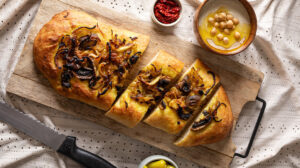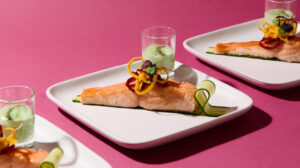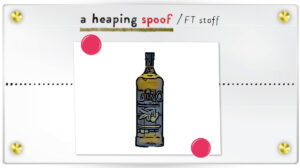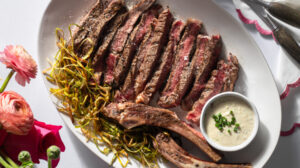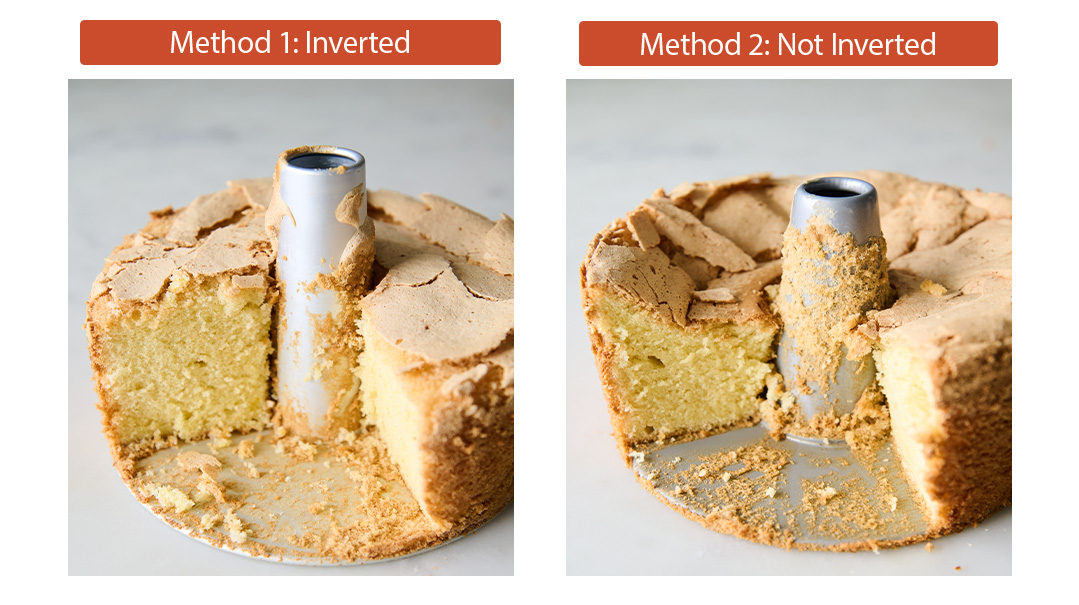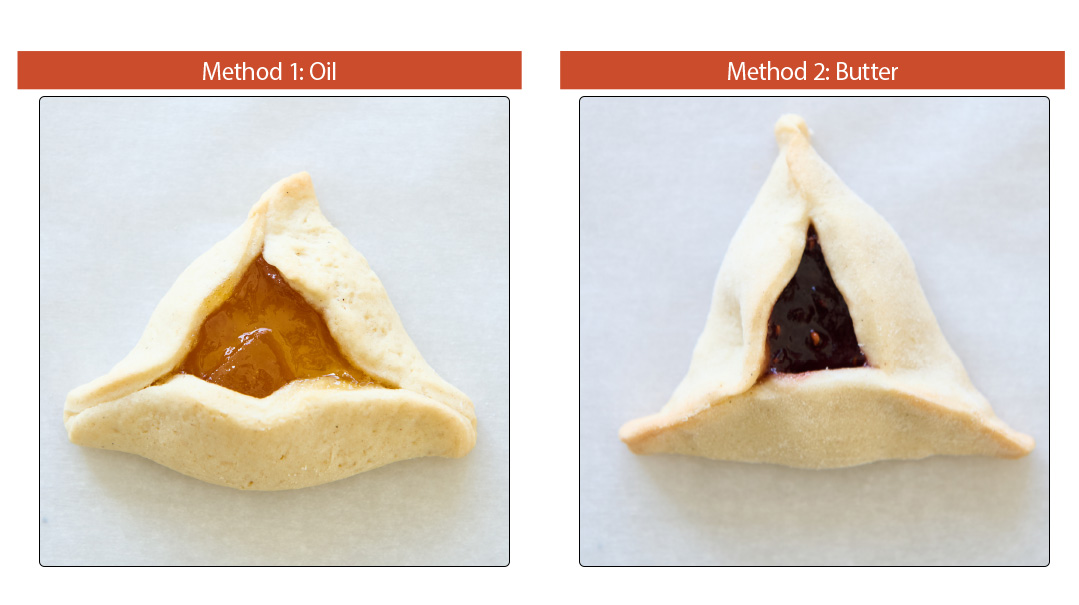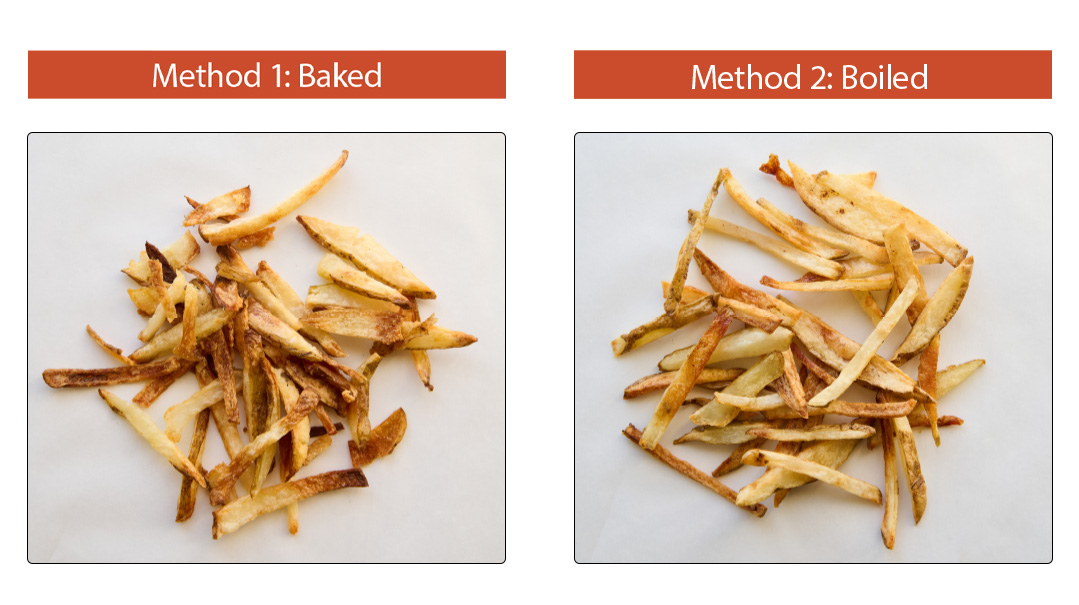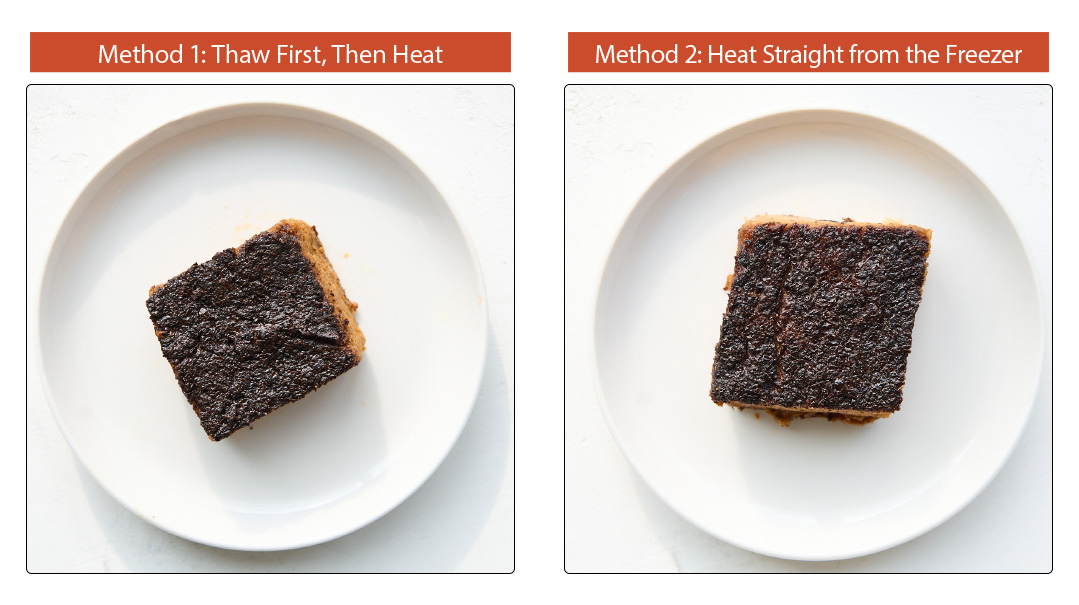Salmon
| July 8, 2020
Photo Credit: Sina Mizrahi
Salmon is undoubtedly the fish I — and I’m assuming you as well — cook the most. It’s readily available, has a pleasant texture, and is greatly versatile. It can be poached, grilled, baked, seared, ground, or broiled. Let’s explore two of the most common cooking methods and find the one that will get us a juicy, moist fillet.
We’re going to season the fillets minimally, but you can expand on this with your favorite spices. I like it heavy on the pepper.
- 1 lb (450 g) salmon fillets, skin on
- 1⁄2 tsp sea salt
- 1⁄2 tsp lemon pepper or cracked black pepper
- 1 Tbsp olive oil
- 1⁄4 fresh lemon
Method 1: Pan-seared
A gloriously crispy skin is achieved by searing the salmon for a few minutes over a piping hot skillet.
Pat the salmon fillets dry and season with salt and lemon pepper. Heat a nonstick skillet over medium-high heat for 2–3 minutes. Reduce heat to medium and add oil. It will start smoking slightly. Carefully place the salmon skin side up and gently press down. Cook for 21⁄2 minutes. Watch the clock because any longer and the seasoning can burn. Carefully flip over and cook for another 21⁄2–4 minutes.
Transfer to a plate, squeeze a 1⁄4 lemon over the fish, and serve.
Method 2: Baked
We all love this method for being easy, hands free, and dependable, especially when cooking a large piece of salmon to feed a crowd. But baking can also be frustrating if you end up with overcooked, dry fish. The key to baked salmon is to cook it until it’s slightly underdone, since it continues to cook as it cools. The timing depends on the fish’s thickness; aim to bake for 4–6 minutes per 1⁄2-inch (11⁄4-cm) thickness.
Preheat oven to 425°F (220°C). Pat the salmon fillets dry and season with salt and lemon pepper. Place on a baking sheet lined with parchment paper (for easy cleanup) and drizzle olive oil over the fish. Bake for 8–12 minutes or until the fish flakes easily with a fork. Transfer to a plate, squeeze a 1⁄4 lemon over the fish, and serve.

My Verdict
The crispy skin from method 1 transforms the salmon into something remarkable. The contrast between the flavorful crisp and moist and tender meat is unparalleled. I aim for method 1, but it’s not always practical if you have many people to feed. That’s why method 2 is a great technique to have in your repertoire.
Note, though, that broiling salmon can be a compromise between method 1 and method 2. The high heat browns the fish nicely (even though it’s not a hard sear) and you can cook a larger amount easily. To use this method, place seasoned salmon on a baking sheet about 4 inches (10 cm) from the broiler. Broil for 5–7 minutes. Allow to cool slightly before serving.
(Originally featured in Family Table, Issue 700)
Oops! We could not locate your form.
